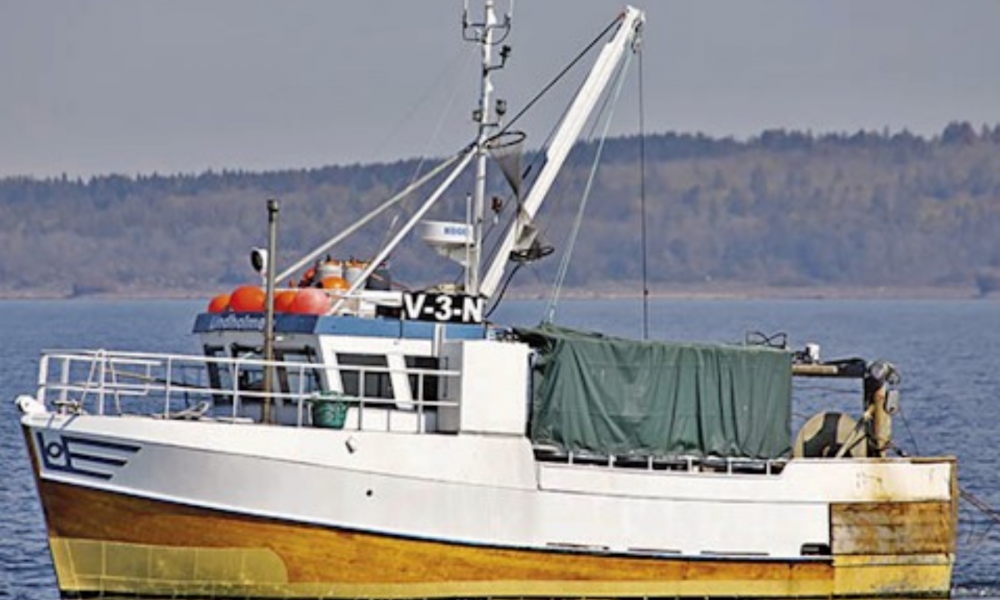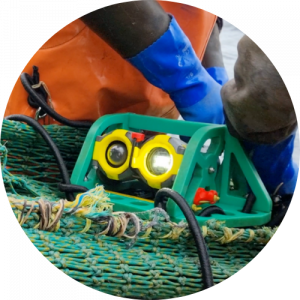
©Photo: Arild Engelsen Skipsfoto
Understanding what is happening inside the trawl gear can be challenging but incredibly important. Experienced Norwegian Shrimp fisherman, Arild Karlsen, implemented the Notus Echo System alongside CatchCam cameras into his fishing vessel Lindholmen. Using these cutting-edge tools, he has been able to improve the efficiency of his fishing operations and fish more precisely.
The Notus Echo System uses sound to detect when fish and shellfish enter a trawl. The system comprises a metal grid that is installed in the extension section of the trawl. When catch hits this grid, it creates an “echo” sound which is picked up by the Notus sensor and transmitted back to the vessel. This gives the skipper information on how much catch is entering their net. As a result, they can learn where the catch volume is highest and use this information to fish more precisely on future tows.
While this system is mostly used for shellfish detection, Skipper Arild Karlsen trialled it in his mixed shrimp and whitefish fishery. During the operation, signals from the Notus Echo System started coming in strong and steady to the wheelhouse. However, the skipper had no reference for these signals and could not reliably interpret the data. Therefore, he found it difficult to know whether the echo was generated by shrimp or by fin fish and if they were hitting the metal more than once.
This is where CatchCam comes into action. The robust fishing camera, produced by SafetyNet Technologies, was placed inside the extension of the trawl net to film the Notus Echo System. That way, skipper Arlid was able to watch this footage after hauling and to align sensor signals with underwater activity.
Underwater footage shows evidence that shrimp was ‘piling’ up at the sides of the grid system.
The underwater footage provided evidence that the shrimp were banking up at the side of the grid and didn’t hit the grid properly. Another observed issue was that fish were also misleading the sensor. They congregated in front of the grid and as they tired, fell back and contacted the grid. This created several false positive signals.
Adding an underwater camera helped skipper Arlid understand the mixed messages coming from inside the net. He adjusted the Notus Echo System to reduce contact with finfish and prevent the shrimp from banking. Thus making the Echo signal more precise to his target shrimp catch.

CatchCam’s underwater footage against the Notus Echo Grid readings. Watch the full footage here.
CatchCam is the most robust underwater video camera available for commercial fishing. With a battery life of up to four days, and a length of 13.5cm, CatchCam makes it easy for fishermen to film their gear in action and gather evidence they would not be able to get otherwise.
Learn more about the underwater camera and Notus grid system with our Norway distributors Marine Crtl at https://catchcam.no/






Enter this giveaway for the chance to try an underwater camera on your fishing vessel, with the help of a SafetyNet Technologies expert.